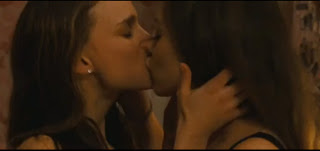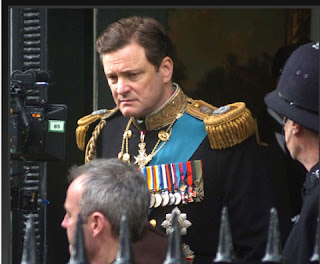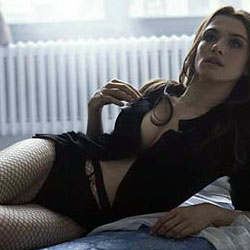ELLEN SEIDLER:
www.cmw.net
Toronto: She’s the co-producer/co-director of the sexy, hit lesbian romantic comedy, And Then Came Lola, starring Ashleigh Sumner and Jill Bennett, and a crusader against online piracy and its negative impact on indie filmmakers.
Since the world premiere of LOLA, Ellen Seidler has waged a one-woman crusade against the flourishing online black market that profits pirates and ad service providers, but leaves artists and creators penniless.
“It’s difficult enough to see one’s film being pirated widely online,” says
Seidler, “What is most disturbing is that everyone is making money, it seems, except those who own the rights to the film.”
And Then Came Lola premiered in June 2009 as part of the San Francisco Frameline LGBT Film Festival and has since screened in more than 100 LGBT film festivals around the world, including Toronto’s own Inside Out LGBT Toronto Film Festival. Like many independent filmmakers, Seidler and her co-director Megan Siler, personally financed the $250,000 required to make the film.
Within hours of its worldwide release, unauthorized copies of the film began appearing on websites that specialize in pirated content. These websites also feature ads for legitimate companies, often placed through ad service providers like Google’s Adsense.
“Seidler’s story is nothing short of inspirational,” says Graham Henderson, President of the Canadian Recording Industry Association. “At a time when piracy is threatening the livelihoods of all creators, her unwavering campaign against pirates and those who finance massive online theft through advertising dollars, will resonate with every indie artist, no matter the genre.”
Seidler, a 25-year broadcast journalism and film veteran, will share her experience with CMW delegates during the Global Forum Networking Breakfast, a ticketed event, and will be available for one-on-one interviews upon request.
- 30 -
About Ellen Seidler: Ellen Seidler is a 25-year broadcast journalism and film veteran. After working for~ABC News in New York she joined KRON-TV in San Francisco as a photojournalist and editor. Currently, she is a professor of Media & Communication Arts at Contra Costa College.~ She has also been a lecturer in Digital Media at U.C. Berkeley’s Graduate School of Journalism and has taught for the Knight Digital Media Center’s multimedia training workshops.
Ellen has also produced/directed/ and worked as a cinematographer on a variety of independent film and documentary projects. Her directing credits include the award-winning documentary “Fighting for Our Lives-Facing AIDS in San Francisco” (narrated by Linda Hunt and appearing on PBS) and the lesbian erotic short “Et L’Amour” which screened in LGBT film festivals throughout the world. She has been a contributing writer for Logo’s AfterEllen.com and is the creator and editor for the non-profit website, Breastcancernetwork.org. More recently she has become involved with efforts to raise awareness around the issue online piracy and its negative impact on indie filmmakers. Her blog on the subject can be found here: www.popuppirates.com.
Ellen received her B.A. in Fine Arts from Harvard University, and her M.A. in Journalism from UC Berkeley.
INTERVIEW
Ellen Seidler isn't in the indie game for the money. But when the filmmaker and her directing partner, Megan Siler, put up $250,000 of their own cash to make "And Then Came Lola," they expected to at least be able to break even, paying off the debts they incurred during production. Their hopes were dashed when they discovered how extensively "Lola" was being pirated on the Web, damaging the financial prospects of the movie's DVD and video-on-demand release. Seidler became infuriated, though, when she noticed corporate ads for companies like Google and Netflix popping up all over the illegal sites that carried her film. Back Stage talks to Seidler, who is fighting back on her blog and speaking out against corporate-sponsored Web piracy.
Back Stage: How much time do you spend in your day now trying to get your film taken off these sites?
Ellen Seidler: Probably a good two to three hours per day, easily. We've had close to 2,000 versions of our film online, with over 10,000 download links now that we've been able to find, and I'm sure there are many more. We've found Arabic websites, Russian, Turkish, Chinese. We found a website selling our DVD with Spanish subtitles; we haven't released it with Spanish subtitles.
Back Stage: When did you first notice the film online illegally?
Seidler: I first became aware that "Lola" was online in late April. Within a day of the German DVD release, apparently it got ripped and put up online. And in terms of the advertising, initially I was really focused on where the film was and how many of them were there and who to contact to get it taken down. But it took off, and I was just sitting there looking, and it was like, "Oh my God, look at all these ads!"
Back Stage: Have you gotten a response from any of these companies?
Seidler: I've tried to contact a number of the companies that I've found Web ads for. Only two were really successful. One was the San Francisco Ballet. They're a small arts agency, and they were incredibly upset when they found out about it. So they made arrangements with their ad company to prevent that from happening in the future and disabled that particular website. Another was Network Solutions. But those ads are still up there. A corporate VP at Netflix sent me an email, not really taking responsibility for it. It was particularly galling to see our film streaming in its entirety next to the Netflix ad when they carry our film. I haven't been able to get hold of anyone at Google, and I would love to.
Back Stage: Do you have an estimate of how much money these companies might be making off your film, or how much you might be losing?
Seidler: It may be a great deal of money; it may not. For me at this point it's more of the principle. People that support piracy always throw back at you, "Well, the people who pirate your film wouldn't buy it anyway." And not every one of them would, but some would. I have to believe it is having a financial impact on us.
Back Stage: Do you think something like online piracy might adversely affect films more than it might affect, say, music?
Seidler: It's a matter of degree. Films like ours don't have a theatrical release. All our income from this film is going to come from DVD or VOD sales. When that revenue stream is impacted, financially the filmmaker is really damaged. Big blockbusters, like "Avatar," they have an opportunity to pay off their investment in the theatrical setting. So I really think it hurts indie filmmakers a lot. I think content creators across the board are going to stop making content. I don't know if I ever want to make another film again. I know a lot of music people who have been hurt by piracy, but I think they've sort of learned to live with it.
Back Stage: What do you ultimately hope to accomplish with this?
Seidler: I'd like to see the various agencies work together to come up with a solution that's not just about one aspect of piracy but a multilevel approach. Making these companies responsible for where their ad dollars go is a good first step. The MPAA and other major organizations who are supposedly working very hard to combat piracy would be better served to really promote the idea that piracy is not just damaging executives at the offices at Disney but it's really damaging all of the people who make their livelihood day in and day out doing catering or makeup or set design. All of those jobs are going away gradually.
Visit the Canadian Music Week website – www.cmw.net – to register for your Canadian Music Week delegate pass.
Canadian Music Week is Canada’s leading annual entertainment event dedicated to the expression and growth of the country’s music, media and entertainment industries. Combining four information-intensive conferences; a trade exposition; a film festival; four awards shows and the nation's largest New Music Festival – Canadian Music Fest - CMW spans a five-day period from March 9 to March 13, 2011 at the Fairmont Royal York Hotel and various downtown Toronto venues, attracting participants from across the globe. For more information, visit www.cmw.net.
We are presently confirming interviews. Interviews and a screener are available upon request.
For Canadian Music Week information, please contact:
Planet3 Communications: Piera Savage/Joanne Smale
T: 647.346.4101 E: info@planet3com.net
Bessie Bullard - Communications Director
T: 905.858.4747 E:bessie@cmw.net
For Canadian Recording Industry Association, please contact:
Amy Terrill
T: 416-967-7272 E: aterrill@cria.ca
Don Hogarth: mobile: 416.565.8920
SHOOT BETTER VIDEO: 33 tips from Ellen Seidler
One of the perks of finishing up one assignment (helping modernize our paper's website) and heading on to the next one (back to the newsroom as a combo print/online features reporter) is that I'm finding cool stuff as I pack up my office. Today's gem: Notes from a fantastic class given last March at the UC-Berkeley Graduate School of Journalism during my week as a 2006 Western Knight Center fellow.
A lot of us in print journalism are moving toward online video storytelling these days, but you don't have to be a pro-jo to get value out of these practical rules. The ideas here belong to Ellen Seidler, but the paraphrasing -- poor as it may be -- is mine.
Discuss your expectations with the team first. Plan your shoot.
When you're shooting on new DV tape, roll 30 seconds of nothing to get past the typically imperfect tape head.
Check your audio before you need it. Are your levels set accurately?
Shoot selectively. Be disciplined with start/stop/record. It will make you a better shooter.
Shut up when you shoot. Audio makes video three-dimensional and you'll need that ambient sound... so don't yack over it.
Hold all your shots at least 10-15 seconds. You can always make a 10-second shot into a two-second shot.
Give yourself extra room in editing action shots.
Avoid excess zooms or pans. Use them sparingly, if at all, and only to reveal or emphasize.
Always begin or end a zoom or pan on a static shot. A zoom should begin with 15 seconds of wide shot, end with 15 seconds of tight shot. This gives you flexibility in editing.
Shoot in sequences: Wide shot; details; angles.
Always use a tripod when shooting a static subject.
Always use a tripod on a sit-down interview.
The wider the angle, the less shake in the shot.
Don't be shy. Get up-close and personal with your subject.
Mix your shots by this ratio: one quarter wide, one quarter medium; half close-up.
Close-up translates a lot better on the Web.
In composing shots, set up a frame and let things happen within it.
For sit-down interviews: Shoot head and shoulders.
Remember the Rule of Thirds. If you divide your screen into vertical thirds, know that the viewer's eye wants to rest on the upper third of the screen.
If your subject in a sit-down is looking into the camera, center the shot.
If the subject is looking at the reporter, then eye-level composition is good. Frame the shot with "nose room" in the direction the subject is looking. Don't center the subject in this composition.
Tell the subject: "Don't look at the camera. Look at the reporter."
Don't make eye contact with the subject.
If you're doing multiple interviews, keep the shots similar.
Get your set-up and "two-shots" after the interview. Move the camera back, but stay on an imaginary line (and remember: once you choose a side, stick to it). Now put the reporter in the shot and have the reporter talk while you run tape of the two of them together. Then get a reverse shot over the subject's shoulder of the reporter listening. Then get a close-up of the reporter listening. You'll use these options during editing.
To really be professional, record 30 seconds of silence to get "room tone."
To get tight depth of field, stretch out your zoom.
Change your angle and perspective. Don't treat the camera like your eyes.
If you're shooting something boring like a building, get people in the shot.
Use a tripod for steady shots. If a tripod isn't available, get close and go wide.
Anticipate action.
Be actively involved in the context of what's going on.
Take care in "dressing the mic" when using a lavaliere set-up. Hide the wire in the subject's lapels, under jackets, etc. "Flip the clip" as needed. Set the mic up in line with the subject's mouth, but not too close to the throat.
A couple other useful tips from my various notes and scribbles:
Have a labeling system and be sure to label all your tapes. It's easy to skip this (something I know from experience), but don't. Pretty soon you'll have a lot of identical tapes, and you be glad you took a few seconds in the field to get organized.
Want to override your auto-focus? This is particularly useful if you're planning a zoom-out. Focus in advance on the subject farthest away and then pull back to the shot you want.














































